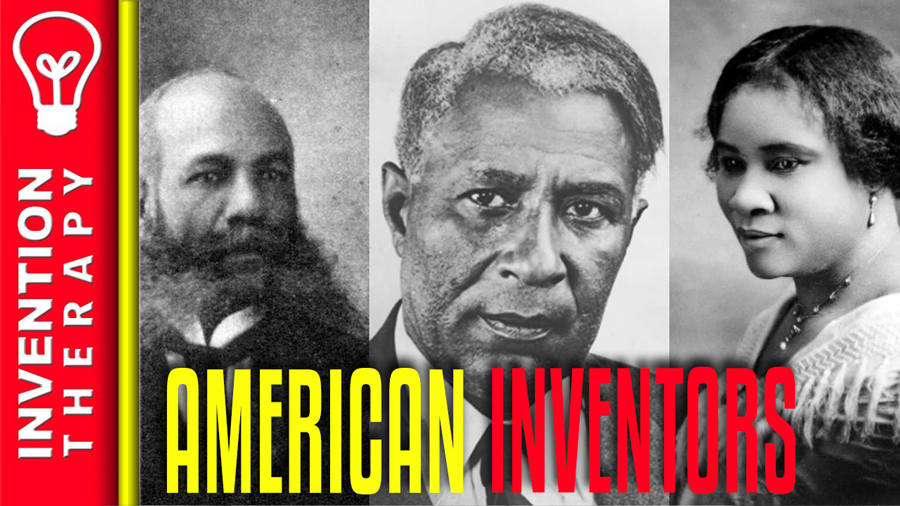A look at 12 famous inventions by African Americans that have helped to shape modern life. Often overlooked by society, many of the things we take for granted were invented by these amazing people.
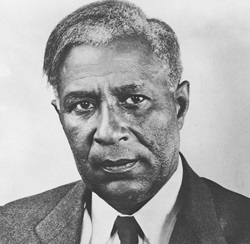
Garrett Morgan
(March 4, 1877 – July 27, 1963)
The yellow traffic light
Garrett Morgan was already a successful businessman in 1922. He owned a hair-care company and a clothing store and was wealthy enough to reportedly be the first African American in Cleveland, Ohio, to own a car. He was born in Harrison County, Kentucky, in 1877. Both of his parents were former slaves. With an intuitive understanding of all things mechanical, Morgan left school after 6th grade and was mostly self-educated.
His first well-known invention was a safety device called a “smoke hood.” It allowed firefighters to breathe more safely as they worked, using tubes and a wet filter. This innovation earned him an honorary membership from the International Association of Fire Engineers.
It’s his contribution to road safety that has made the most significant impact on modern life. Red and green for “stop” and “go” were already in use as traffic lights when he purchased his first car. Driving was still a new and dangerous activity because horse-drawn carriages outnumbered cars. After witnessing a collision at an intersection with a red-green traffic light, Morgan had the idea for an improvement. His 1923 patent for a “three-part traffic light” added a yellow light between green and red. This new light alerted drivers that the traffic signal was about to change, giving the driver time to yield the right of way.
Red-yellow-green became the international standard for all traffic signaling devices. Morgan’s simple contribution to traffic safety has probably saved many lives over the years.

Madam C. J. Walker
(December 23, 1867 – May 25, 1919)
Hair Care Products
Until the early 20th century, no one was making hair care products and cosmetics for African American women. Women used homemade treatments that were harsh and damaging. Sarah Walker saw an opportunity to create gentler products specifically designed for African American hair.
Sarah Breedlove was born one of six children in 1867. Her parents were sharecroppers on a Louisiana plantation. She was orphaned at a young age. After moving to St. Louis, Missouri, with her young daughter, she took a job selling hair care products for businesswoman Annie Malone.
Walker was eventually inspired by her former employer, and by her brothers who worked as barbers. After moving to Colorado with her husband, Charles Walker, the self-styled Madam C. J. Walker went into business for herself.
She sold her first product, called “Walker’s Wonderful Hair Grower,” in 1906. Before 1920, the “Madame C. J. Walker Manufacturing Company” was employing thousands of African American women making and selling cosmetics and hair products. Walker eventually became the wealthiest self-made woman in the country and remains noted as one of the most successful African American entrepreneurs of all time. She was a philanthropist, supporting the YMCA and NAACP, funding scholarships and advocating for African American women.
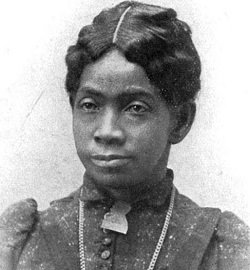
Sarah Boone
(1832–1904)
The Ironing Board
Sarah Boone was born a slave in 1832 in North Carolina. She later gained freedom and worked as a dressmaker in New Haven, Connecticut. Until her invention, the ironing board was just that: a board. She saw a straight, inconvenient wooden plank and reshaped it into the ironing board we know today. The curved edges make ironing easier along with a longer, thinner design for easier ironing of sleeves.
People don’t have right-angle corners and neither do their clothes; Boone’s ironing board was patented in 1892. The design made it easier to keep clothes in their proper shape while removing wrinkles.
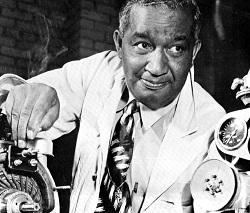
Frederick McKinley Jones
(May 17, 1893 – February 21, 1961)
First Refrigerated Truck
A veteran of WWI and self-taught mechanic, Frederick McKinley Jones was born in 1893 in Cincinnati, Ohio. He was left by his father to be raised by a Catholic priest at age seven. With little formal training, he left school around the sixth grade. After returning from military service, Jones was living in Minneapolis, Minnesota, repairing electronics and experimenting with refrigeration when he developed a portable air-cooler.
Using his invention, Jones designed trucks that could keep perishable food refrigerated during travel. He received a patent for his invention in 1940, and by 1949 his company, Thermo King, was worth 3 million dollars—about 55 million in today’s currency.
He held more than 60 patents, and Jones was posthumously awarded the National Medal of Technology. It isn’t just food preservation that his trucks revolutionized. Medicine and blood also depend on refrigerated vehicles for transportation, and his trucks were a major asset to the U.S. Army during WWII.
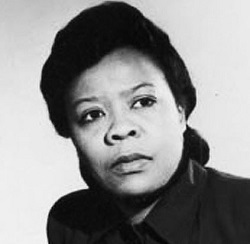
Marie Van Brittan Brown
(October 30, 1922 – February 2, 1999)
Home Security System
A woman who often felt vulnerable coming and going from her home alone at night, Marie Van Brittan Brown, along with her husband Albert Brown, co-invented the very first home security system. The Browns lived in Queens, New York in the 1960s when crime rates were high and police response often slow. Marie regularly worked night shifts as a nurse, and her husband traveled for work. Brown was frequently alone and nervous about opening the door without knowing who was on the other side. She and her husband designed a home security system consisting of peepholes, video monitoring, a two-way microphone, a remote-controlled lock, and an emergency call-button for the police.
When they heard a knock at the door, they could view the visitor from any angle, speak with them, open the door or call for emergency assistance.
Her patent was filed in 1966, and countless homes, offices, businesses and apartment buildings use variations of her system. CCTV would not exist without Brown’s original closed-circuit security videos. Today, there are millions of concealed camera security devices in the world. Marie Brown received recognition from the National Scientists Committee and was interviewed by the New York Times.

Miriam Benjamin
(September 16, 1861 – 1947)
Gong and Signal Chair
Noticing the wasted effort on the part of both service staff and restaurant and hotel guests, Miriam Benjamin, an African American teacher and inventor from Washington, D.C., designed a chair that would play a chime and light up at the press of a button. It would notify attendants that a guest needed service. The Gong and Signal Chair for Hotels, patented in 1888, was used by the House of Representatives, and later evolved into the call button used to request assistance from flight attendants on airplanes.
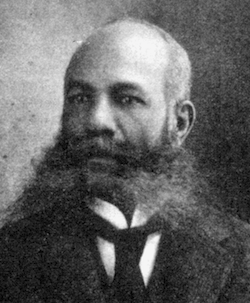
Alexander Miles
(May 18, 1838 – May 7, 1918)
Automatic Elevator Door
For a long time elevator doors opened and closed manually in two steps. The door to the elevator and the door to the shaft had to be closed separately. It was easy to forget to close the shaft doors after entering the elevator which caused many accidents involving people falling down elevator shafts.
In 1887, Alexander Miles’ watched in horror as his young daughter come perilously close to falling down an elevator shaft. This barber from Duluth, Minnesota, invented elevator doors that opened and closed automatically using levers and a roller belt. This much safer mechanical/electrical design is still used today.
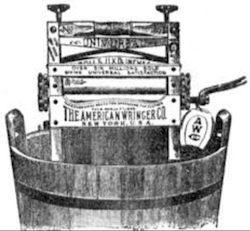
Ellen Eglin
(1849 – after 1890)
Clothes Wringer For Washing Machines
For much of human history, laundry was one of the most difficult, time-consuming and labor-intensive household tasks. In the 1800s in Washington, D.C., Ellen Eglin invented one of the first devices to simplify the process of cleaning clothes from home.
Her mechanical clothes wringer combined two rollers turned by a crank; as the wet laundry was sent between the rollers, most of the water would be squeezed out. Fearing that as an African American woman she would never be able to successfully promote it, she sold the idea to a white agent in 1888. Eglin saw no profit from her device’s success and has only been recognized recently for her important invention.
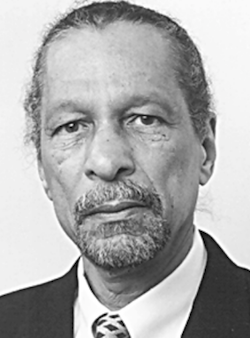
Dr. James E. West
Born: February 10, 1931
Foil Electret Microphone
James Edward Maceo West was a researcher and acoustician at Bell Labs in 1962 when he, along with his colleague, Gerhard Sessler, invented the foil electret microphone. Before their invention, “condenser” microphones were larger, more expensive, and less effective. Almost 90% of the microphones manufactured today use foil-electret technology. West has been inducted into the National Inventors Hall of Fame and received the National Medal of Technology and Innovation.
Retired from Bell, West is still active in advocating for minority representation in science and technology. He has pushed for increased opportunities for minority students and fellows at Bell and is on the board of a Baltimore nonprofit aimed at encouraging junior high students to explore math and science.
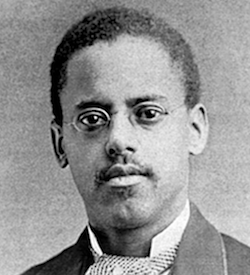
Lewis Latimer
(September 4, 1848 – December 11, 1928)
Carbon Filament Light Bulb
When Thomas Edison filed his patent for an “improved” light bulb in 1878, the longest-lasting light bulbs were still only functional for a few days. A few years later, his employee, Lewis Latimer, invented a technique to treat the carbon filament in light bulbs so that they would last much longer. He filed back-to-back patents on variations of the carbon filament. He also developed a technique that would allow the filament to be shaped (a light bulb with a coiled or M-shaped filament could produce much more light).
Latimer was born in 1848 in Chelsea, Massachusetts. Both of his parents had escaped slavery in Virginia by going north. Before working for Edison, Latimer was one of the draftsmen who drew the designs for Alexander Graham Bell’s telephone patent. He is an inductee to the National Inventor’s Hall of Fame, and his home in Flushing, Queens is now the Lewis H. Latimer House Museum.
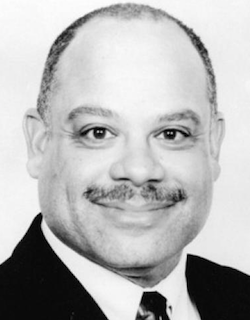
Dr. Mark Dean
Born: March 2, 1957
Personal Computer Technologies
There are 9 patents in total that make up the first 1981 IBM PC, and National Inventor’s Hall of Fame inductee Mark Dean holds 3 of them. He lead the team that created the first one-gigahertz processing chip. He also helped develop the internal architecture that allows personal computers to be connected to printers, modems, and other devices.
Dean has a Ph.D. from Standford University and was the first African American to be awarded a fellowship by IBM. In Knox County, Tennessee, where he was born, “Mark Dean Day” is officially celebrated on April 25th.
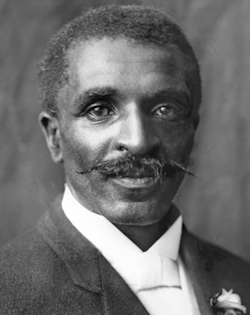
George Washington Carver
January 1, 1864 – January 5, 1943)
Pioneer of Agricultural Science
There is no African American inventor more famous than George Washington Carver and for good reason. Carver was born a slave in Missouri in the early 1860s. When he was still an infant, he and his parents were kidnapped. Moses Carver hired men to recover them, but only George was returned. In 1865, slavery was abolished in Missouri. George and his brother remained with Moses Carver, who raised them like his own children.
Taught to read by Moses Carver’s wife, Susan, George fought tooth and nail his entire young life for education. He left home at the age of thirteen and attended a number of schools before graduating from high school in Minneapolis, Kansas.
He originally studied art and music at Simpson College in Iowa. An art teacher observed how talented he was at drawing plants and flowers, and suggested that he explore botany. He was the first African American student to attend Iowa State University, and his experiments and discoveries there gained him national recognition as an agricultural scientist.
Carver advocated for crop rotation; soil used for certain crops, particularly cotton, quickly becomes nitrogen depleted, and yields grow progressively poorer. He discovered that certain plants, like legumes, restore nitrogen to the soil. One of the legumes he suggested was the peanut, and in order to encourage unfamiliar farmers to plant peanuts for the first time, he developed and promoted new uses. He published at least 105 recipes and uses for the peanut. (Although it’s commonly thought that George Washington Carver invented peanut butter, this isn’t the case. This misconception is simply because many people only learned about peanut butter through his publications.
He was hired by Booker T. Washington to head the agriculture department of Tuskegee University, where there is now a museum in his name. A number of parks and gardens are named for him as well. It’s hard to overstate the impact inventor George Washington Carver had on American agriculture.

Are you ready to become an inventor?
Getting your idea out of your head and into your hands is only the first in a long set of steps towards becoming a successful inventor.

First Steps To A Successful Invention
At Invention Therapy, we believe that the power of the internet makes it easier than you think to turn your invention idea into a reality. In most cases, you can build a prototype and start manufacturing a product on your own. Changing your way of thinking can be difficult. Being an inventor requires you to balance your passion with the reality of having to sell your products for a profit. After all, if we can't make a profit, we won't be able to keep the lights on and continue to invent more amazing things!Please subscribe to our Youtube Channel!


